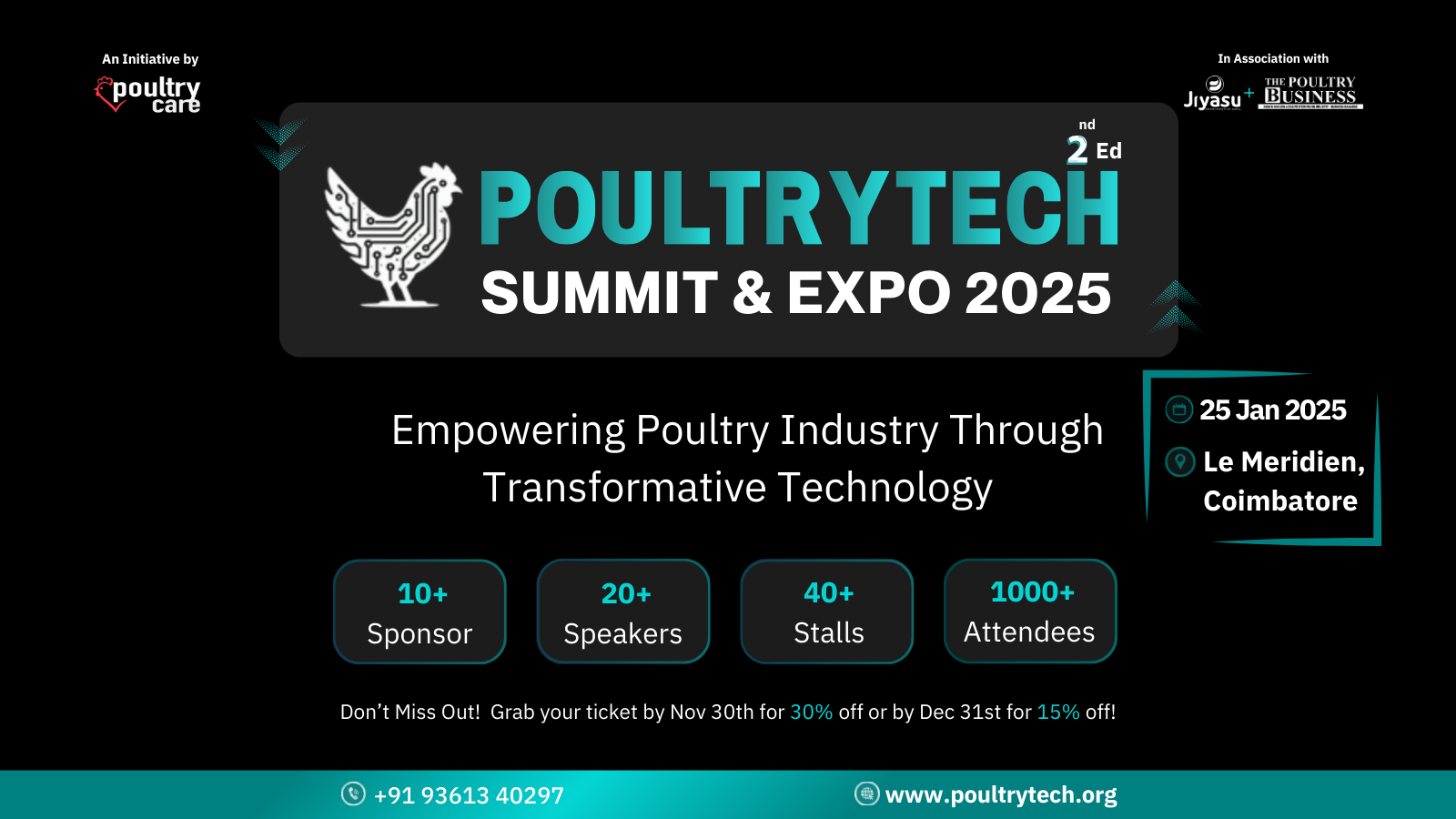Feed plays the most crucial role in the journey of a broiler bird from chick to market weight. While much attention is given to feed quality and formulation, one overlooked but equally important factor is feed intent planning. Feed intent is the projection of how much feed a flock will require throughout its growing cycle. It sets the direction for feed mill scheduling, farm preparedness, and bird health outcomes.
In my journey of working closely with large integrators and poultry farm operators, I have seen firsthand how poor feed intent management can lead to underfeeding, wastage, and production losses. On the flip side, a well-planned feed intent enables smooth operations across the entire contract farming network.
Let us explore how broiler integrators can take a proactive approach to feed planning and how it directly affects farm performance and cost control.
Understanding Feed Intent in Broiler Operations
Feed intent is more than just a guess at how many tons a flock might consume. It is a calculated estimate based on breed performance standards, expected weight gain, mortality projections, and real-time climate conditions.
When integrators plan feed intent with precision, it helps mills produce and deliver feed at the right time and in the right quantity. This ensures birds never go without feed, which is crucial during their fast growth phases. It also prevents the risks of overstocking at the farm, which can lead to feed spoilage and financial loss.
A solid feed intent is the foundation of supply chain balance in contract broiler farming.
How Poor Feed Planning Impacts Bird Growth
Birds require specific nutrients at different growth stages. Any delay or mismatch in feed delivery due to unclear planning leads to interruptions in nutrient supply. This causes stress and uneven weight gain across the flock.
Feed gaps often result in birds spending more time on starter or grower diets than intended, which affects their final body weight and feed conversion ratio. Inconsistent feed schedules also increase the risk of digestive issues and diseases.
On large-scale farms where feed volumes are high, the effects of poor planning multiply quickly, turning into lost revenue and lower settlement weights.
Proper feed intent helps farms stay on track with their feeding program and meet expected growth milestones.
Aligning Feed Mill and Farm with the Right Intent
For feed planning to succeed, communication between feed mills and farm supervisors needs to be clear and timely. The feed mill should be aware of daily or weekly feed requirements based on flock age, weather, and growth performance.
The farm, on the other hand, must provide updated data on bird consumption, remaining feed stock, and any changes in mortality or environmental stress. This two-way coordination ensures that the feed plan remains dynamic and adjusts based on real farm conditions.
Without this alignment, even a well-thought-out feed intent can fall short due to operational disconnects.
Using Historical Data to Refine Feed Forecasts
Broiler integrators can improve future feed intent accuracy by learning from past flock performance. Comparing projected feed usage with actual consumption from previous batches highlights gaps in estimation.
If certain farms consistently consume more or less than forecasted, it could indicate differences in farm practices, bird health, or environmental conditions. Adjusting feed plans based on such insights leads to better feed efficiency and cost savings.
Over time, this habit of comparing intent with actual data builds a more reliable planning culture across the organization.
Training Farm Teams on Feed Intent Awareness
Even the best feed plans can fail if farm staff are unaware of their role in maintaining it. Feeding times, feeder space, storage hygiene, and early reporting of feed shortages all influence whether feed intent is executed properly.
Train your farm teams to monitor daily feed usage and communicate consumption trends to supervisors. Empower them to detect issues like feed bridging in silos or uneven feed distribution.
When the farm team understands that their input shapes the next feed plan, they become active participants in improving flock outcomes.
Conclusion
In contract broiler farming, feed intent is not just a number. It is a commitment that links feed mills and farms in a shared goal of raising healthy birds profitably. When feed intent planning is accurate and well-communicated, it prevents shortages, cuts waste, and keeps growth targets within reach.
Large broiler integrators that treat feed planning as a strategic function not just a logistical task will always have a competitive edge. They build trust with contract farmers, keep feed costs under control, and maintain strong flock performance even as production scales.
Smart feed planning is smart farming. And it begins with intent.



